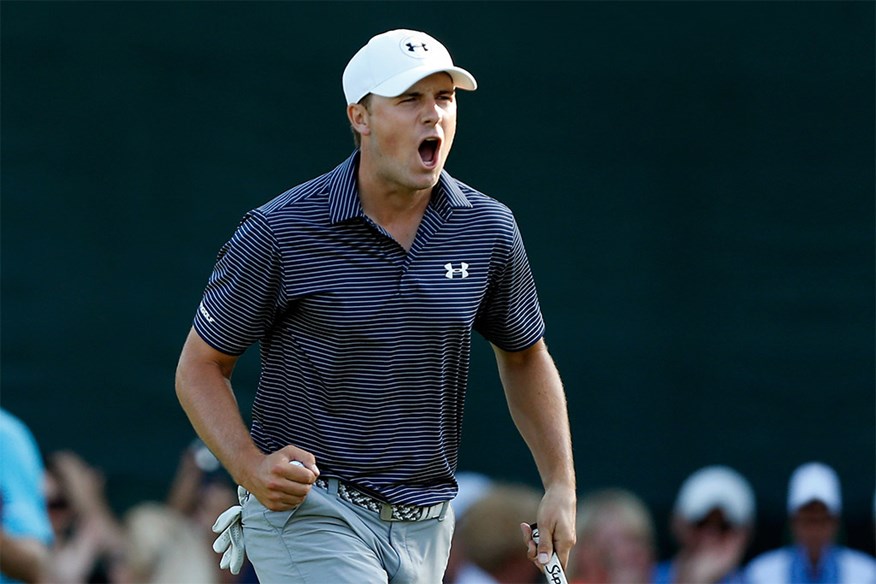The Big Three: Jordan Spieth
Last updated:
AUGUSTA WEAPONS: Great putting, distance control with irons
John Fields remembers the first time he saw Jordan Spieth play. “He was 13, had shot a 62 a few months before, and was making a lot of noise in Texas junior golf,” says the head coach of the men’s golf team at the University of Texas (UT). “I was immediately impressed with his ability to score. He had an incredible knack for avoiding bogeys. And, of course, he was extremely competitive.”
Spieth, who had begun life with a conventional putting grip but swapped to left hand below right when he was 14, began playing for Fields at UT in the autumn of 2011, four months after having contended at the PGA Tour’s HP Byron Nelson Classic, two months after winning his second USGA Junior Amateur Championship, and just days after recording a 2-0-1 record in the Walker Cup at Royal Aberdeen. By that time, Spieth had become what Fields describes as a ‘streaky phenomenal putter’. He won three events in his first college season, and was named an All-American. He also helped UT win the national championship by beating the University of Alabama’s Justin Thomas on the final day.
“He had this innate ability to get in the zone,” Fields says. “His work ethic was amazing. And he and his instructor, Cameron McCormick, were able to introduce feels in Jordan’s swing that were immediately successful.”
Spieth decided to leave college and turn professional during his sophomore year. Then, after surviving on sponsor’s exemptions at the start of the 2013 PGA Tour season, he won his first Tour event at the John Deere Classic the week before the Open Championship. Later that year, he was one of Fred Couples’ picks for the US Presidents Cup team. If anything, 2014 was slightly disappointing as he failed to record a second win, and finished two behind Bubba Watson at the Masters after they had begun the final round tied for the lead.
Then 2015 happened. In April, he won the Masters by four. It isn’t immediately obvious from the stats how Spieth managed to pull away from the field, as he didn’t lead any statistical category (except scoring average of course). He was way down the pack in driving distance – 282.6 yards which was 44th longest and 33 yards behind Dustin Johnson, and he didn’t lead in either GIR or putting. He did hit an impressive 54 out of 72 greens in regulation (75%), but Ian Poulter hit five more (81.94%). And he was actually the third best putter, three-putting three times on the weekend and averaging 1.5 putts per GIR for the week – .03 behind both Steve Stricker and Johnson (Johnson won the driving distance and putting categories, but his irons failed him. Of the 55 players that made the cut only six hit fewer greens over the 72 holes).
Spieth’s combination of second in GIR and 3rd in putting proved potent. Retaining an unmatched command of his game and emotions at all times, he made a recordsmashing 28 birdies, along with eight bogeys and one double-bogey. He just did everything well or very well, avoided disasters, and finished 12-under for the 16 par 5s.
Fields says the Spieth of today isn’t too different from the kid he coached at UT. “He has the same competitive tenacity,” he says. “His swing is tighter and strikingly more repetitive, but that’s about it.”
About to embark on his 19th season at Texas, Coach Fields isn’t surprised Spieth worked out how to win the Masters at such a young age. “He always had the belief and vision,” he says. “His game fits the course, and every other major venue, very well. He’s consistent, has a great short game, and is a superb putter.”

